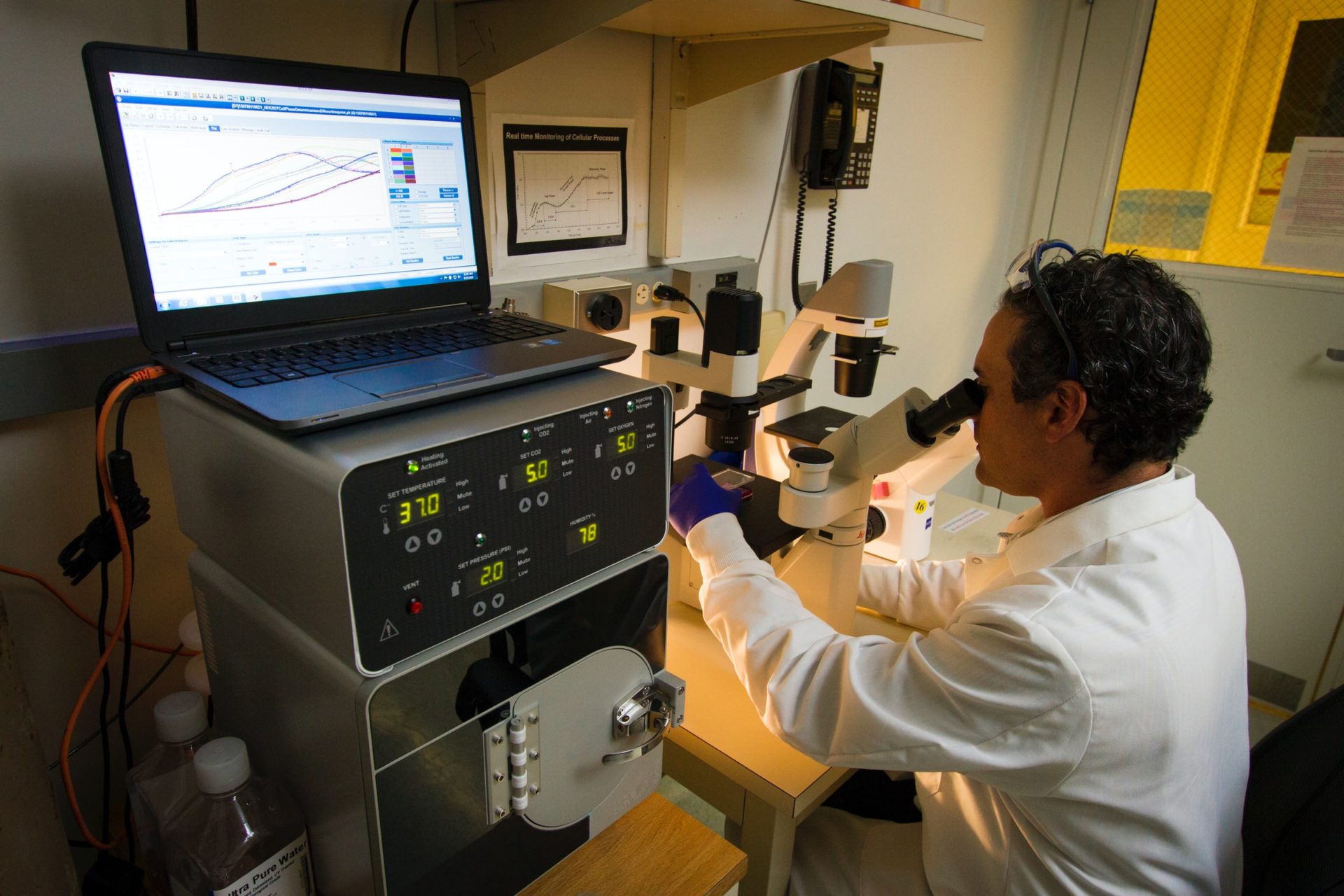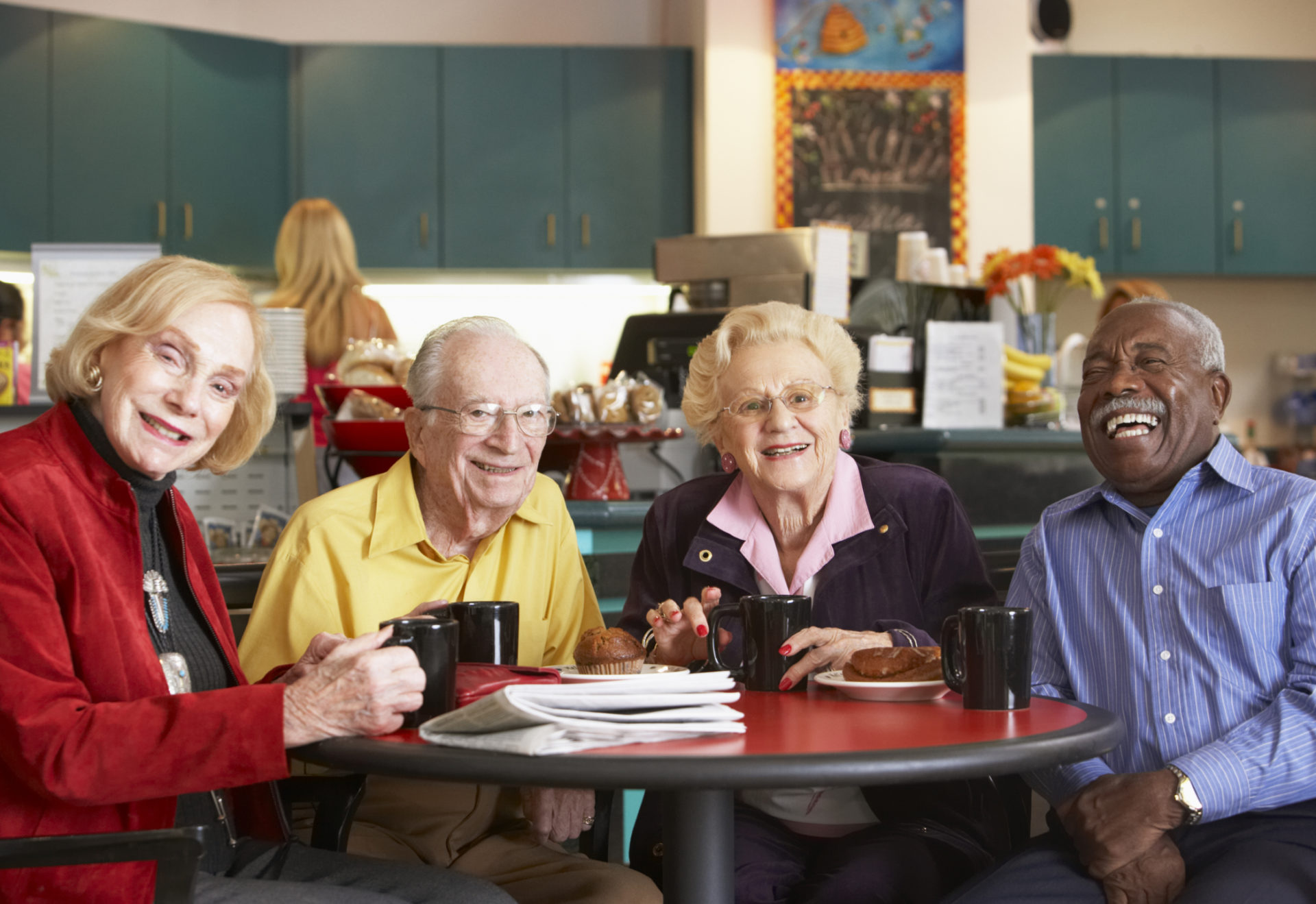Health & Aging:
Work in health care helps older Coloradans to thrive
The prospect of living longer offers many opportunities for people to thrive as they age. These opportunities include more time to develop interests and hobbies, share knowledge and experience with the next generation, and achieve long-term goals. However, for people to really take advantage of these opportunities as they age, one aspect is essential: their health.
Overall, Coloradans are a healthy population, so it is not surprising that its 65+ population ranks the 5th healthiest in the country. In fact, Summit County is the place with the highest life expectancy - with an average of 86.83 years - in the U.S. and is considered a longevity hotspot.
As a possible explanation as to why people in the state’s central mountains live longer, experts suggest that socioeconomics plays a big part. This profile includes: the majority have a college degree, a high median household income, and access to high-quality health care. In addition, older residents report eating well and remaining physically and socially active well into their later years.
By 2050, there will be twice as many Coloradans over 60 as there are today. This demographic change will bring both benefits and challenges, and have a significant impact on Colorado’s economy, infrastructure and social landscape.
Understanding the nuances within the spectrum of health for the older adult population across the state is essential to creating effective policies and services.
To better understand the needs of older adults, new tools are being developed, such as the Colorado Health Institute’s Aging Vulnerability Index, which looks at key risk factors and needs that produce a score of older population levels of vulnerability per county. Local and state agencies can use this tool to create effective strategies when deploying support services including for COVID-19 vaccination. For Coloradans looking for more information, there are a number of resources available related to COVID-19 throughout the state.
To be successful, effective, and sustainable healthcare policy need to aim at improving health holistically for those 65 and older. Also, as the state’s population skews older, more assistance will likely be needed in order to meet the health needs of its older residents.
This, in part, requires looking at how to support physical and mental health through preventive care initiatives, improving health care access, and providing health financing and insurance programs (e.g.: Medicare and Medicaid). More broadly, the state will need to consider long-term support services including home and community-based caregiving.
There are also indirect factors that can profoundly affect one’s wellbeing including geographic location. For older adults living in rural places, this often means they are more vulnerable than their urban counterparts due to the lack of accessible healthcare, limited housing support, and higher poverty rates. Adding to those issues, it can often be hard to reach these constituents in order to inform them of the resources available to help them. There are, however, channels to help get the word out to remote communities that will help connect them to the resources they need. Here are 5 ways for nonprofits to reach older adults in rural communities.

The state’s renowned universities are at the forefront of longevity research and activities, including the Multi-disciplinary Center on Aging at the University of Colorado Anschutz Medical Campus. The Center works on a range of age-related topics involving rehabilitation, health services, telehealth, palliative care, aging women’s health, and more.
The Columbine Health Systems Center for Healthy Aging at Colorado State University is another key player in the Coloradan aging research sector. The Center aims to be a “catalyst for interdisciplinary research and evidence-based outreach to improve lifespan and healthspan.” To do so, they focus on three core activity streams including interdisciplinary research, education and training, and community engagement.
Some other universities have a narrower research focus like the University of Colorado Boulder, which specializes in behavioral genetics research and has done some impressive work on aging and stress resistance. Some of their recent research findings on the benefits of physical exercise during youth as a contributor to healthy aging has been recognized nationally.
The challenges and opportunities presented by a rising aging population are certainly vast and complex and call attention to the need for more innovation. That is why universities across the state have been encouraging more collaboration and partnership, the Colorado Coalition for Aging Research and Education (CoCARE) is a great example of this effort. Bolstered by their expertise, this coalition of seven universities is bringing their wealth of knowledge and experience to the table so that they can have a greater collective impact on the field of aging.

The tech world is another key sector that has taken a leading role in the race for innovation in the 50+ space. One of the greatest advantages of technology is that it has the power to enhance innovation across multiple fields such as medicine, health policy, engineering, and finance.
Technological innovation can help collect better data and in bigger quantities, accelerate medical and pharmaceutical research, expedite testing, and refine solutions using AI simulation to create better policies, and design appropriate infrastructure for older populations.
In Colorado, the age-tech community is bringing innovation to the aging sector by connecting innovators to potential collaborators and funders as well as building awareness for existing initiatives and startups.
Promising tech innovation related to aging is targeting some of the most critical challenges for aging communities including senior mobility, housing, and caregiving. From mobile apps to tech wearables to smart home devices, health-related technology continues to improve exponentially year-over-year. Most of these innovative gadgets do not just help caregivers, it also directly enhances the life of seniors themselves by providing solutions to reduce safety risks and facilitate independent living.
Subscribe to our free Newsletter
Stay up-to-date on the trends and innovation
happening in Colorado’s longevity market.
Older adults are increasingly embracing the use of technology in their daily lives. This is driven, in large part, by the rapidly changing profile of the 65+ group compared to previous decades. The new generation of seniors has different consumption habits and expectations for products, technology, and services. People 65 and older are more healthy, educated, and wealthy and by 2032, this population group alone will generate more than half of the entire U.S. GDP.
Even those older adults that remain outside of the digital sphere, general societal changes including the current pandemic are pushing them to quickly adapt to new technologies. With restricted mobility, many seniors in Colorado have turned to the Internet to virtually participate in community activities, stay connected with loved ones, and shop for groceries.
Telehealth and related services have also been helpful in providing essential health care and related information to older adults during the COVID-19 outbreak.

Among the various challenging that comes with an aging population, dementia is one of the most critical. Dementia is the 6th of the leading cause of death in the U.S. An estimated 5.1 million people suffer from Alzheimer’s disease, and experts predict a 40% increase in this number over the next 10 years.
Dementia is such a critical issue not just because of the high mortality rate associated with it but also because it has a significant impact on the people supporting those living with the disease. This support network includes loved ones, caregivers, and, more generally, the nation's health care system.
However, there are signs of hope that are sprouting up across the country, including one by the federal government designed to promote innovative support systems at the local level. One such example of this effort is Dementia Friendly Denver.
Because dementia brings on a number of challenges to families and caregivers, it may make sense for older adults to move into a memory care facility at some point. For these seniors with memory loss and cognitive impairment including dementia, assisted living and memory care housing options are often the most popular. Although similar, these two options have a crucial difference. While they both offer many similar services, including housing, meals, and help with daily activities, memory care housing offer some additional specialized services for its residents.
In Colorado, senior living residences are starting to offer all types of assisted living options, including active adult, independent living, assisted living, memory care, and skilled or rehabilitation environments to cater to all needs.
There are only four kinds of people in the world: those who have been caregivers, those who are currently caregivers, those who will be caregivers, and those who will need caregivers.
Although Colorado ranks as one of the best states for providing long-term care services for its seniors, experts point out that improvements are still needed and at a faster pace if we are to meet the increasing needs of this growing demographic.
Using an innovative scorecard tool for identifying areas in need of improvement, AARP Colorado was able to identify two specific areas of concern - affordability and access, and family caregiving – that the state needs to improve upon. This is out of the five dimensions measured by the tool that also included: choice of setting and provider, quality of life and quality of care, and effective transitions between nursing homes, hospitals, and homes.
Support services and resources are being created to assist caregivers, especially for those caring for seniors with complex health needs like dementia. Colorado also took a strong stance and an essential step toward providing better support to seniors and their caregivers with the passage of the Healthy Families and Workplaces Act. This law provides additional benefits including better compensation and sick leave terms. The new law also extends these benefits to those caring for sick relatives and loved ones.
Help for informal caregivers - including respite care - is certainly a critical need especially because it can come at a very high physical, emotional and financial cost to caregivers. The impact on caregivers themselves is such that it increases the prevalence of major conditions like hypertension and depression. This often leads to even higher health care costs for the caregiver in addition to other financial costs they incur as a result of their caregiving duties.

Another growing health concern for older adults is social isolation and loneliness, named the silent killer, and proven to be as lethal as smoking 15 cigarettes a day.
Loneliness has been increasing for many reasons, including shifts in family dynamics and new social and cultural changes that are highly influenced by new technologies, location, and transportation challenges. Research shows that continuous and long-lasting loneliness exponentially increases health risks and can translate to severe conditions such as obesity, anxiety, and depression. The recent COVID-19 pandemic has further increased people's isolation and could have devastating long-term impacts on the health of older adult populations.
There are many available solutions to reduce people’s loneliness such as volunteering and community activities targeting the elderly, the use of technology to keep people connected as well as senior living options – all designed to keep older adults engaged.
- Coronavirus Resources: Local, State & National
- How Dementia Friendly Denver Fosters Inclusive Communities
- How one Strategic Alliance is Advancing Age-Tech Innovation in the Longevity Market
- Med Tech Offers a Glimpse Into the Future of Aging in Place
- Medical Record Keeping App Game Changer: Older Adults & Caregivers
- 5 Ways Nonprofits Can Reach Older Adults in Rural Communities
- Colorado’s Oz Architecture takes Assisted Living Design to the Next Level
- How the Growing 50+ Population is Transforming Colorado
- Denver Making Strides in Becoming One of the Best Places for Older Adults
- How Centennial’s Emphasis on User Experience is Helping Its Older Adult Residents
- How CU Anschutz’s Aging Center’s Emphasis on Community is Paying Off
- Colorado Academics Collaborate To Meet Challenges In Aging
